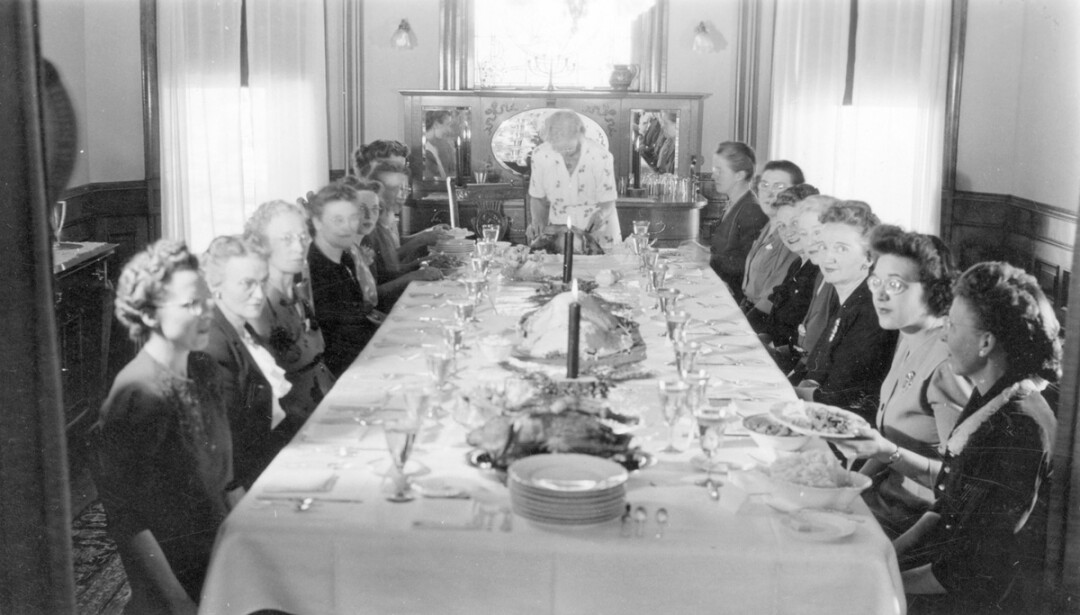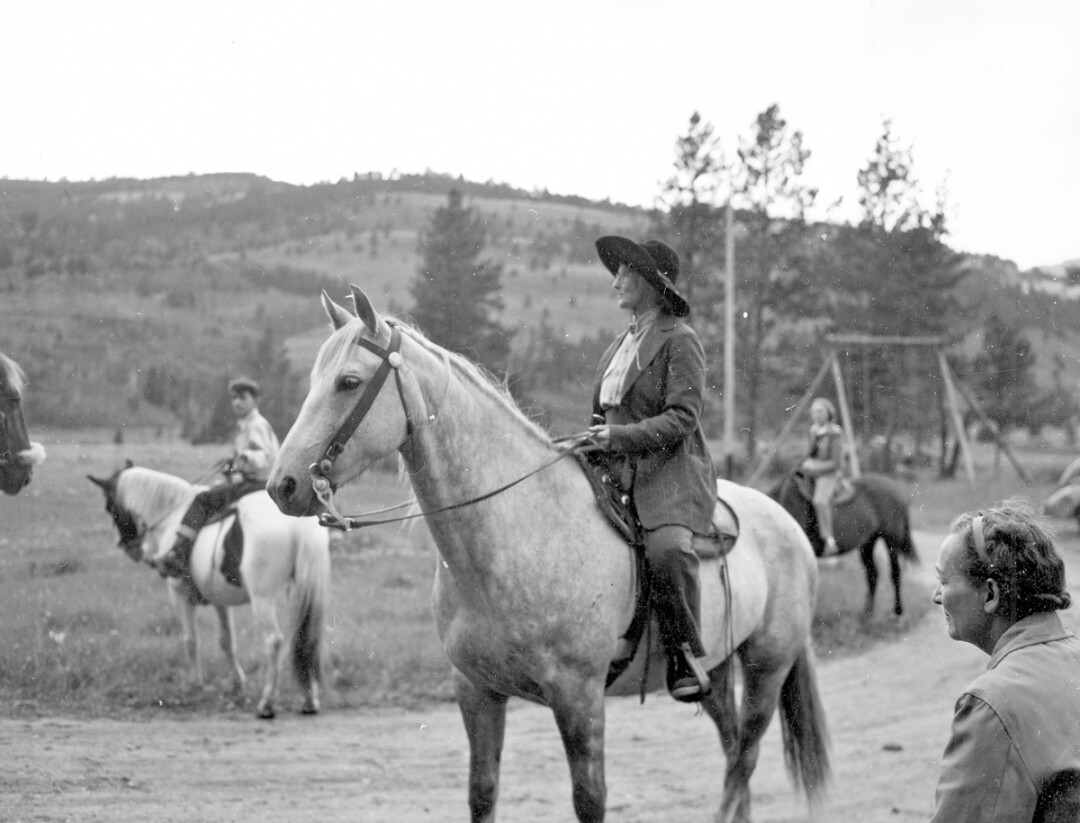Remarkable Bozeman Women
Standing Tall & Strong
Rachel Phillips | Friday Mar. 1st, 2019
March is Women’s History Month, a time to celebrate the achievements and contributions of all American women. Throughout history, countless local ladies have lent their expertise, talents, and time to make our region and community a better place. Here are just a few of the remarkable women that have made their mark on Bozeman history.
Mary Long Alderson
In an early 20th century world in which women were restricted by corsets and politics, Mary Long Alderson rose as a shining star. Mary’s husband was Matt Alderson, a Bozeman newspaperman. She took advantage of her family’s media platform to promote her views on temperance, women’s suffrage, and sensible female dress, publishing columns in the Avant Courier newspaper. In addition to her work as a dedicated member of the Women’s Christian Temperance Union (WCTU), she also tirelessly campaigned for Montana’s adoption of the bitterroot as the state flower and is widely viewed as the driving force behind the flower’s ultimate selection.
Frieda Bull
Frieda Bull taught mathematics at Montana State College for nearly half a century. Bull came with her parents to the Gallatin Valley in 1893, where she excelled academically. She was valedictorian of her 1903 Gallatin County High School graduating class and went on to study math and physics at Montana State College. She graduated with honors in 1907, earned a master’s degree in 1909, and spent her entire career teaching mathematics at MSC (now MSU), retiring in 1954. According to research assembled by historian Connie Staudohar in the book, Bozeman Women’s Heritage Trail, “At a time when few women received a college education, let alone held a faculty position, Frieda Bull was an anomaly, rising to full professorship in what many still consider a nontraditional field for women. By her own estimate, she taught 14,000 students in her long career, the large majority of them males, and it was these young men who established the saying around campus that their professor’s initials—FMB—stood for “flunking many boys.”
Ida Davis
In December 1962, a letter by Judge William Wallace Lessley printed in the Bozeman Daily Chronicle eulogized teacher Ida Davis as “a very little lady. But she stood tall and strong in the minds and hearts of hundreds of her former students.” Davis came to Bozeman in 1903 from Missouri and spent most of the next 47 years teaching English and math at Gallatin County High School. She also served nine years as Gallatin County Superintendent of Schools and taught summer education courses at Montana State College. Davis was remembered as a fantastic teacher, but more importantly, she viewed every student as special and treated them accordingly. Perhaps her most famous pupil was movie-star Gary Cooper, who made it a point to visit her each time he returned home to Montana.
Marga Hoseaus
Born in San Francisco in 1918, Marga Hosaeus spent most of her childhood in Germany. Beginning in 1945, following graduate school in Illinois, Hoseaus served as head of the Women’s Health and Physical Education Department at Montana State College. After the men’s and women’s physical education departments were merged, Hosaeus continued teaching at Montana State as a professor until her retirement in 1979. A new health and recreation center was constructed at Montana State University in 1984 and christened the Marga Hosaeus Health, Physical Education and Recreation Complex.
Julia Martin
On Thanksgiving Day in 1945, a group of 15 women gathered in Julia Martin’s large dining room. As Julia carved the turkey, the guests (mostly single female educators and academics with no area family) enjoyed each other’s company around the long table. Julia Martin never married and held a soft spot in her heart for other single women, and she made friends among the students and faculty at Montana State College. Her friends included academics like Bertha Clow, Olga Ross Hannon, and Harriette Cushman. In addition to hosting the annual Thanksgiving dinners, which lasted from 1927 to 1964, Martin opened her spacious family home to college students and faculty, who rented rooms from the basement to the third floor. Julia Martin passed away in 1966, but her legacy lives on in her South Grand Avenue house, where the current owners continue her tradition of hospitality.
Elizabeth Lina Alderson Houston and the Bozeman Housekeeper’s Club
The Bozeman Housekeeper’s Club, formed in 1894, was more than just a club that provided socializing opportunities for local females. By the time it disbanded in the mid-1980s, the 90-year-old organization had the distinction of being one of the oldest women’s clubs in the state. Besides fostering an interest in housekeeping and domestic science, early club members also studied books, plays, and art. Members of the club acted as community advocates. They pushed for better garbage disposal, assisted the Red Cross, and hosted events for charity. One prominent member in the club’s early years was E. Lina Houston, who convinced club members to join the Montana Federation of Women’s Clubs. Houston herself was a well-known local woman outside of the club. In 1933, she wrote and published a history of Bozeman and the surrounding area titled Early History of Gallatin County, Montana.
Mary Harris McDonald
Born into slavery, the courageous and resilient Mary McDonald traveled with her husband to Montana Territory in 1863. Mary and Richard had four sons and three daughters. Tragically, all four of the McDonald’s sons died in childhood—one was buried along the trail during their journey west to Montana. The three McDonald daughters—Mollie, Belle, and Melissa—grew up in the family home that still stands at 308 South Tracy Avenue in Bozeman. Mary McDonald, affectionately known as “Grandma” to many, was well known in town for generously helping her neighbors. She was a dedicated and faithful member of the Methodist Church until her death at age 100 in 1941.
Dr. Caroline McGill
One of Montana’s first female physicians, Dr. Caroline McGill received an impressive education from the University of Missouri, Johns Hopkins, the Mayo Clinic, the University of Chicago, and schools in Berlin. McGill came to Butte, Montana in about 1911 where she practiced medicine for most of her professional life, later retiring to the Bozeman area. McGill purchased the famous 320 Ranch in Gallatin Canyon in 1936 and resided there until her death in 1959. Dr. McGill, a much-admired preserver of history, had an impressive collection of antiques that became the core of the McGill Museum (now known as the Museum of the Rockies) at Montana State University.
Sacagawea
In April 1805, the Lewis and Clark Expedition headed west from the Mandan villages along the Missouri River in western North Dakota, bringing with them a fur trader named Toussaint Charbonneau, his wife Sacagawea, and their infant son Jean Baptiste. It was a wise decision to add Sacagawea to the party. Much of Sacagawea’s life is a mystery, but the Shoshoni woman was likely born in the 1780s in what is today Idaho. Her people traveled the region on horseback, spending time near the headwaters of the Missouri River. It was near this area where, 5 years earlier, Sacagawea was taken captive by the Hidatsas and traveled with them eastward into what is now the plains of Montana and North Dakota. Accompanying Lewis and Clark on their westward journey gave her the chance to visit her homeland again. Her familiarity with the landscape, knowledge of edible plants, language skills, and relationship to the Shoshoni people proved essential to the survival of the men on the Expedition.
Emma Weeks Willson
Talented musician Emma Weeks Willson came to Bozeman in 1869 with her husband, General Lester Willson. Her piano was likely the first such instrument in town, and it attracted almost the same degree of attention as Emma herself (a new female resident in a frontier town populated primarily with men). Growing up on the East Coast, Emma Willson studied music in Albany, New York, where she met her husband at a home for disabled Civil War veterans. In Bozeman, Emma serenaded passersby from the open window of the Willson’s first home on Main Street. According to her 1923 obituary in the Bozeman Daily Chronicle, her music was “instrumental in stopping serious disturbances on the streets of the city.” A devoted member of the First Presbyterian Church, Mrs. Willson played and sang for church functions, including each new pastor’s installation. When the new Opera House was constructed in 1890, Mrs. Willson tested the acoustic quality, offering her much-respected opinion.
These remarkable local women and their stories of tragedy, courage, perseverance, compassion and grit show that the female influence on Gallatin County and Bozeman history is broad and enduring. Many women have, in the words of Judge Lessley’s description of Ida Davis: “stood tall and strong in the minds and hearts of hundreds…”
| Tweet |
